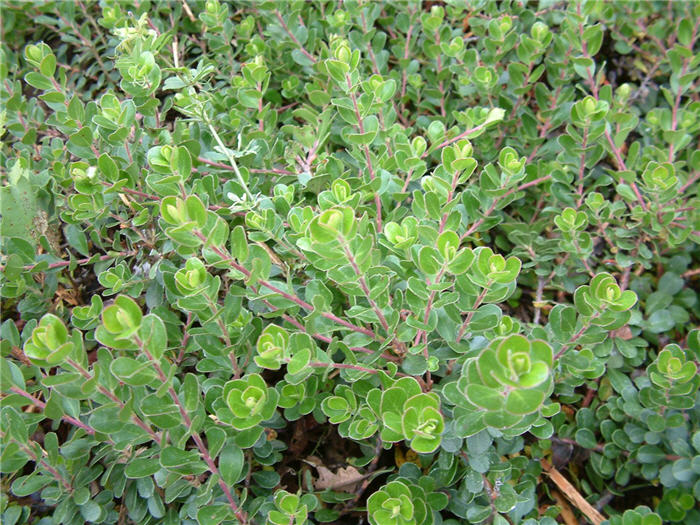| Botanical Name: Arctostaphylos uva-ursi | |
| Common Name: Bearberry, Kinnikinnick |

-
Anatomy
-
Culture
-
Design
Plant Type
Broadleaf Evergreen, Shrub, Ground cover
Height Range
Under 1'
Flower Color
Pink, White
Flower Season
Spring
Leaf Color
Dark Green
Bark Color
Red
Fruit Color
Purple
Fruit Season
Summer, Fall
Sun
Half, Shade
Water
Low, Medium
Growth Rate
Moderate, Slow
Soil Type
Sandy, Clay, Loam, Rocky, Unparticular
Soil Condition
Average, Poor, Well-drained, Dry
Soil pH
Acid, Neutral
Adverse Factors
n/a
Design Styles
English Cottage, Japanese, Ranch, Seascape, Native Garden, Woodland
Accenting Features
Showy Flowers
Seasonal Interest
Winter, Spring
Location Uses
Entry, Shrub Border, Foundation, Parking Strip, With Rocks
Special Uses
Erosion Control, Mass Planting, Fire Resistant, Small Spaces
Attracts Wildlife
n/a
Information by: Stephanie Duer
Photographer: Steve Mullany
Photographer: Steve Mullany
-
Description
-
Notes
A Utah native. Finely textured, dark glossy foliage is evergreen; one of the few broad leafed evergreens for our region. Pinkish, bell-shaped flowers appear in early spring, followed by purplish berries in late summer that persist into winter. New wood growth is an attractive reddish purple. Grows 3-6" x 5-6' wide. This is a very good groundcover for somewhat shady areas. There are kinickinnick planted in the Greater Avenues Water Conservation Garden.
Grow in part to full shade, in average to poor, well-drained soils. Slow to established, and it is sensitive to being over-watered. Berries are valued by birds. Plant where it is protected from hot summer sun and drying winter winds. Does not need pruning other than to keep it within the space allotted. A popular western native, there are many cultivars that have been commercial developed, including 'Alaska,' Massachusetts,' 'Point Reyes,' and 'Woods Compact.' Berries are good for birds, but are not recommended for human consumption.